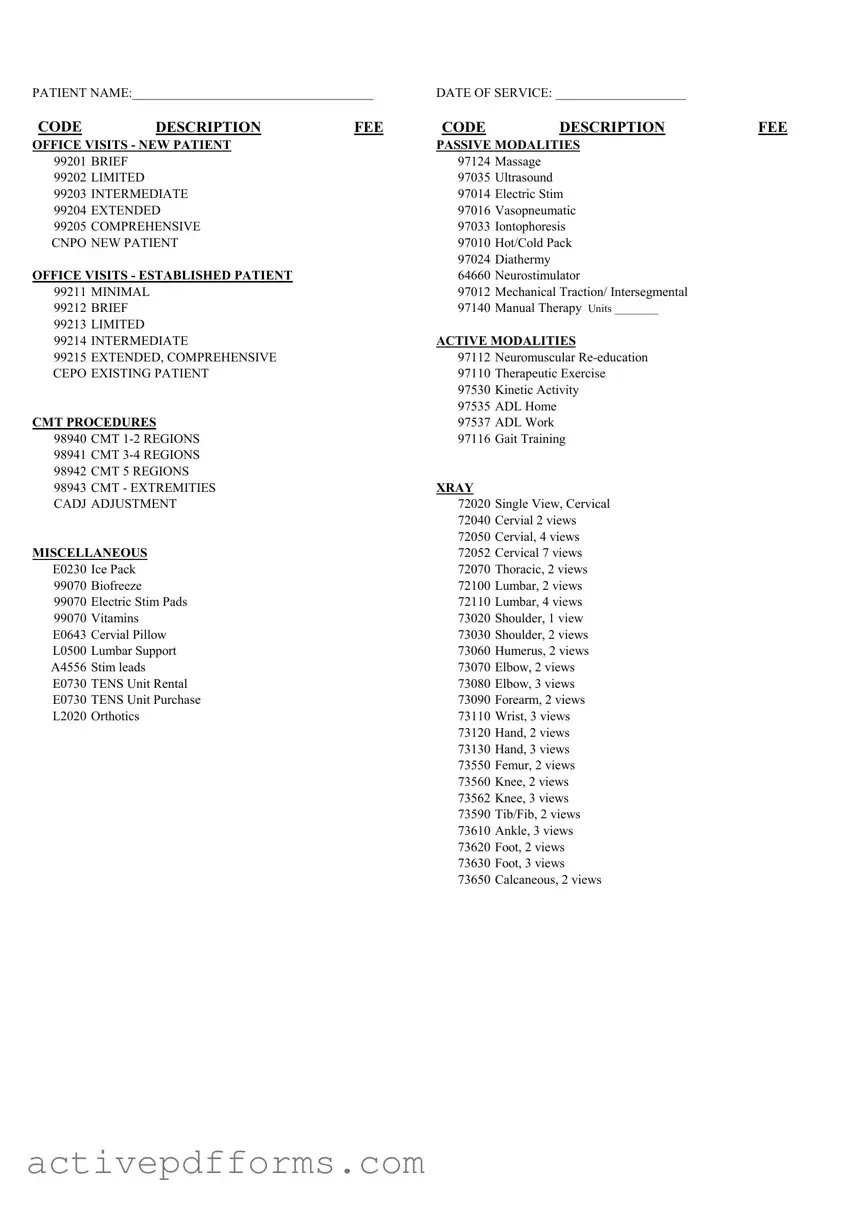The Chiropractic Superbill form is a comprehensive document that encapsulates a wide array of services provided in the chiropractic care industry. From detailing patient information and the date of service at the outset, it categorizes a multitude of service codes under diverse headings, making it an indispensable tool for both practitioners and patients. The form meticulously itemizes office visits, distinguishing between new and established patients, and encompassing everything from minimal consultations to comprehensive evaluations. It further delves into the realm of passive and active modalities, listing specific treatments like massage, ultrasound, and therapeutic exercises, thereby illustrating the extensive range of therapeutic interventions available. The inclusion of Chiropractic Manipulative Treatment (CMT) procedures, spanning several regions and extremities, highlights the form's attention to detailed care delivery. Also, it does not overlook ancillary services, as denoted by the inclusion of X-ray services and miscellaneous items such as ice packs and vitamins. This exhaustive enumeration not only aids in seamless billing processes but also provides a transparent record of care delivery, facilitating a smoother interaction between healthcare providers, insurers, and patients.
